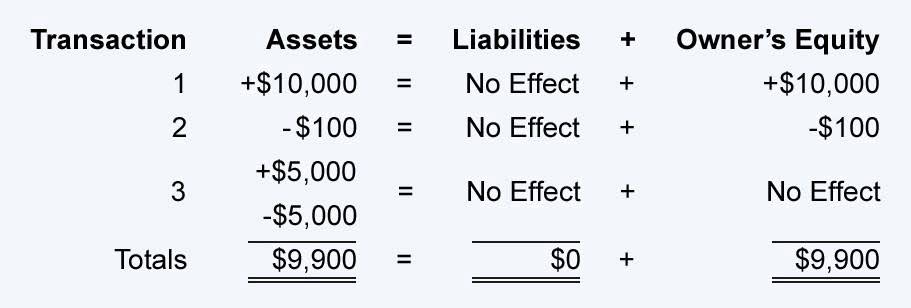Content

ProjectManager is work and project management software that captures real-time data for more insightful decision-making. Organize costs and resources and monitor them in real time to better manage your budget and deliver success to your stakeholders. Project accounting and project controls are two of the more common terms used in construction management. However, project accountants mainly focus on the billing cycle, and making sure that all practices conform to generally accepted accounting principles. Project controls refer to the measures used to ensure that the work happens on time, and on budget. Implementing these methods falls to the project manager, who must balance cost controls against the overall timeline, among other factors.
- All your purchases, revenue, employee expenses, and so on go in the sub-ledger.
- Edwin’s company has a policy that dictates he adds 18% onto the cost estimate.
- Role based access in Zoho Books lets you give restricted access to those who you are working with.
- That’s where differences in tracking work and billing come into play.
- Doing so allows you to manage certain types of transactions and more easily perform cost comparison analysis between projects.
All resource costs can be tracked and compared with budgets for proactive decisions on financials. Historical information is also available at your fingertips which enables you to make better estimates on upcoming projects.
A Comprehensive Guide to Project Accounting
Through careful monitoring of day-to-day costs, expenses, billing, and revenue, you can use this method to optimize your budget and keep financial goals on track for a specific project. Track transactions, time, and resources used.Now that you have the foundation set up for project accounting, you can start tracking costs. It’s important to emphasize how crucial accuracy is when inputting this data because it can have a domino effect or skew the reporting. There are eight main project accounting principles that we’ve outlined below. Keeping everything in one platform is extremely important for project managers and accountants in the first place.
- Define your workflows and approval processes, and release change orders with full business intelligence visibility and audit trail control.
- Project accounting techniques and processes also support project billing.
- Having a clear understanding of overall project costs is vital for accurate project accounting.
- At the time of billing the customer, Zoho Books automatically adds the retainer payment to the invoice, making things simpler for you.
- Track transactions, time, and resources used.Now that you have the foundation set up for project accounting, you can start tracking costs.
When the execution phase begins, teams start to work on project tasks and the costs are subtracted. At this point, project managers start to see the difference between what they planned and how work progresses, and start to report the health of the budget to stakeholders. If not monitored, most of the budgets slip during the execution phase. For budget overruns to stop happening in project-based companies, it’s important to see where teams register their time. On the other side, clients would either have their own fixed budget or ask you to give a rough estimate of how much a project is going to cost. This includes the practice of generating financial reports to follow up on the financial progress of projects. Upper managers use them for better visibility across projects to see if they are delivering value to an organization.
Project Accounting for Construction Firms
There is risk involved as it’s not certain that payment will be delivered regularly. This method means you recognize revenue as it’s delivered as a percentage of the total revenue. Sloppiness and errors take time to correct and can lead to significant negative impacts on profit and earnings. Monitoring receivable income and supporting project managers with collections.

Keep track of skillsets and levels of expertise for every employee (and don’t be afraid to ask questions about what they can and cannot do). Payments may be made in installments, which means money comes into the business in consistent time intervals. Accounting information from one project can also be used to estimate the costs and opportunities of future work, even if it is only a guide.
Flexi Software
This is because this type of work is commonly based on contracts for unique projects. Compare actual project budgets to original and/or revised budgets with real-time reports. Access and view all project costs (e.g., materials, labor, and services). Vary billing rates by employee / customer, type of work, or specific project. Recognize revenue based on completion percentage or task progress. Every organisation approaches projects differently and every project will have its own set of deliverables and requirements. Therefore, each organisation will also be approaching project accounting in different ways as their business demands.
What is the purpose of project accounting?
The purpose of project accounting is that it allows professional services organizations to manage their businesses better. 5 key benefits of project accounting include: 1. Profitability: Macro and Micro Visibility 2. Proactive Data-Driven Decisions 3. Balanced Project Comparison 4. Higher Customer Satisfaction 5. Better Resource Management
If there’s a difference, you adjust the project budget, scope or timeline to bring them into harmony. After all, there are probably already a lot of moving parts already. However, implementing project accounting as a standard part of the process can actually help streamline project management. However, with project accounting, projects must have similar costs that can reasonably be compared. Otherwise, you won’t be able to gather useful insights other than a general high-level view of the overall benefits of certain types of projects.
Multiview ERP
Project data should feed into real-time reporting as much as possible. Tracking projects in a manual spreadsheet means that reports are likely to be dated, which means decisions are based on old information. Project accountants need accurate visibility over costs and project rollout in order to stay on top of costs and other key performance indicators. Project accounting helps you decide business priorities before starting a new package of work, as well as to report on progress throughout a project and help to keep it on time and on budget. Both professionals and students can take project accounting training formally or informally.
- At the end of this first quarter, its total incurred costs are 20% of the total cost of the project, enabling the accountant to recognize 20% of the projected revenues, or $6,400,000.
- It’s the project accountant’s role to ensure the project financials such as billing and revenue are set up correctly to match the contract terms for the project.
- These features enable companies to see all cost, resources, schedule and finance transactions in one place.
- Project accounting is one tool you can use to evaluate projects and determine if they’re worthwhile or if the margins are too tight.
- The practice allows project managers and their teams to see the cost, schedule, resources and progress of their projects at a detailed level.
Project accounting has definite start and end dates as defined by the project lifecycle. Once the project closes, so does its project accounting requirements. Financial accounting, on the other hand, governs the finances of the entire organization throughout the financial year. Additionally, project accounting reports are based on the deliverables of the projects.
The Role of the Project Accountant
It’s a perfect metric for project managers to do a financial analysis and ensure that they are making the most out of their time and resources. You can manually register project revenues or the revenues can be registered through project invoicing. If a project invoice is posted to Invoicing, project revenues are available in Project. In addition, you can maintain the forecast deviations of the revenues by element and activities against the contract, which allows you to monitor the result in the Monitoring module.

